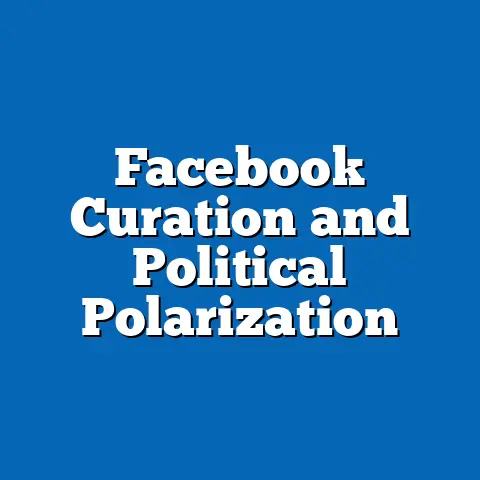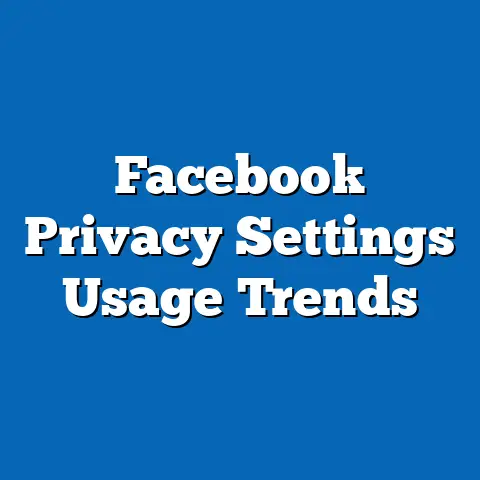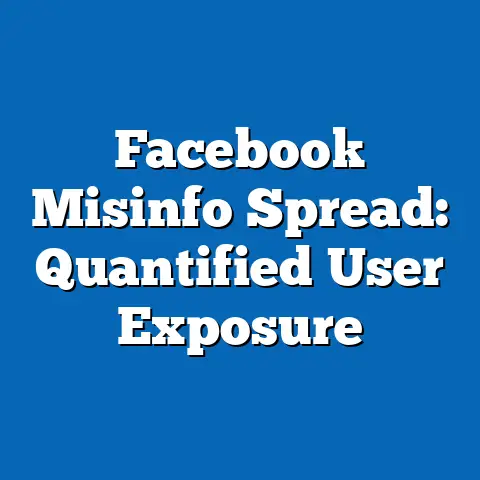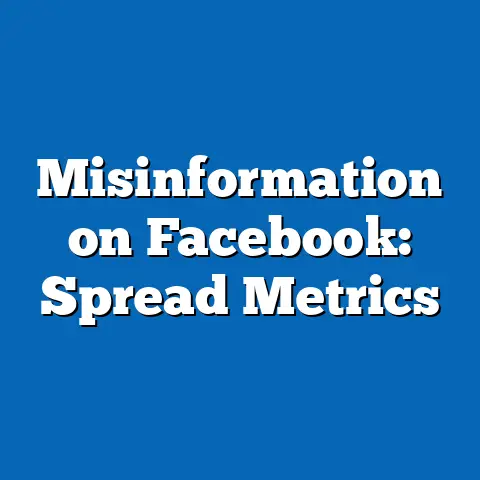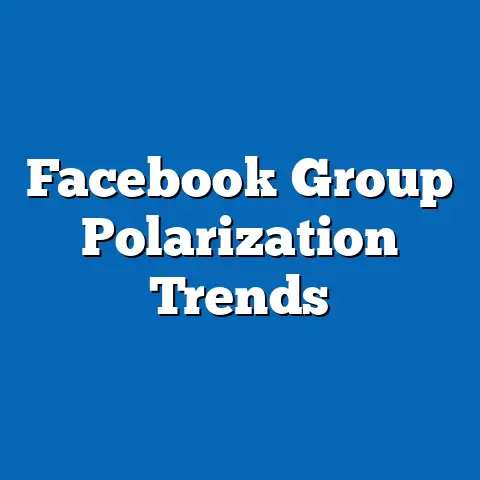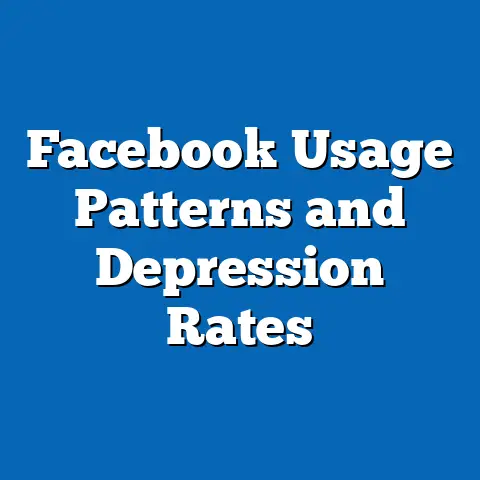Misinfo Trends on Facebook Over 5 Years
Did you know that over the past five years, misinformation on Facebook has been disproportionately shared by older adults aged 65 and above, a demographic often assumed to be less active on social media? According to a 2019 study by Guess, Nagler, and Tucker published in Science Advances, users over 65 shared nearly seven times as many articles from fake news domains as the youngest age group (18-29), despite making up only about 11% of Facebook’s user base in the United States. This surprising trend reveals a critical intersection of age, digital literacy, and susceptibility to false information, setting the stage for a deeper exploration of misinformation trends on the platform.
This demographic’s core beliefs often align with traditional or conservative values, with Pew Research Center data from 2020 indicating that 60% of adults over 65 identify as conservative or lean Republican, compared to just 36% of adults under 30. Voting patterns reflect this ideological tilt, as 59% of voters aged 65 and older supported Donald Trump in the 2020 U.S. presidential election, per Edison Research exit polls, compared to only 36% of voters aged 18-29. What distinguishes this group from younger cohorts is not just their political leanings but also their lower digital literacy—only 59% of seniors reported confidence in identifying false information online in a 2021 AARP survey, compared to 78% of adults under 50. This article will analyze the broader trends of misinformation on Facebook over the past five years (2018-2023), examining demographic drivers, content themes, platform dynamics, and societal impacts, while grounding the discussion in empirical data and historical context.
Scope and Methodology
This analysis synthesizes data from peer-reviewed studies, platform reports, polling data, and independent fact-checking organizations to trace the evolution of misinformation on Facebook. Key sources include reports from the Center for Countering Digital Hate (CCDH), the Digital Forensic Research Lab (DFRLab), and academic studies from institutions like NYU and MIT. The timeframe of 2018-2023 captures critical periods, including the 2020 U.S. presidential election, the COVID-19 pandemic, and subsequent political upheavals, which have shaped the misinformation landscape.
Demographic Composition of Misinformation Sharers
Misinformation on Facebook is not uniformly distributed across user demographics; certain groups are more likely to engage with and share false content. As noted earlier, older adults (65+) are a primary vector for misinformation, sharing false news at a rate significantly higher than younger users. A 2020 study by Brashier and Schacter in Current Directions in Psychological Science attributes this to age-related declines in critical thinking when evaluating online content, coupled with a higher trust in traditional media formats that fake news often mimics.
Beyond age, political affiliation plays a significant role. Data from the 2019 Science Advances study found that self-identified conservatives were more likely to share misinformation, with 18% of conservative-leaning users sharing fake news links compared to just 4% of liberal-leaning users. This trend aligns with ideological echo chambers, as conservatives on Facebook are more likely to follow pages and groups promoting conspiratorial or hyper-partisan content, per a 2021 report by the NYU Center for Social Media and Politics.
Education levels also intersect with misinformation sharing. A 2022 Pew Research Center survey revealed that adults with a high school education or less were twice as likely (22%) to believe and share false political stories on social media compared to those with a college degree (11%). Racial demographics show less pronounced variation, though a 2020 study by the Knight Foundation found that Black and Hispanic users were slightly more likely to encounter misinformation related to racial justice issues, often due to targeted disinformation campaigns. These demographic patterns highlight the complex interplay of age, ideology, and education in driving misinformation engagement on Facebook.
Core Themes and Content of Misinformation
Over the past five years, the content of misinformation on Facebook has evolved in response to major societal events, but certain themes have remained consistent. Political misinformation, particularly around elections, has been a dominant category. A 2020 report by Avaaz found that in the lead-up to the U.S. presidential election, false claims about voter fraud and election integrity garnered over 800 million views on Facebook, with top-performing posts often originating from hyper-partisan pages.
The COVID-19 pandemic introduced a surge of health-related misinformation, with false claims about vaccines, treatments, and the virus’s origins spreading rapidly. According to a 2021 CCDH report, just 12 accounts—dubbed the “Disinformation Dozen”—were responsible for 65% of anti-vaccine content shared on Facebook between February and March 2021, amassing over 59 million followers collectively. These posts often preyed on fears and distrust of institutions, resonating with users skeptical of mainstream science.
Conspiracy theories, such as those related to QAnon, have also gained traction. A 2020 study by the DFRLab identified over 4.5 million interactions with QAnon-related content on Facebook between 2018 and 2020, with engagement peaking during periods of political unrest like the January 6th Capitol riot. These themes—political deceit, health skepticism, and conspiratorial narratives—reflect core anxieties exploited by misinformation creators, often tailored to specific demographic fears and beliefs.
However, critics argue that these measures have been insufficient or inconsistently applied. A 2021 investigation by The Washington Post found that Facebook often failed to act on flagged misinformation during critical periods, such as the 2020 election, with over 70% of false claims about voter fraud remaining online for weeks. The platform’s reliance on user reports and automated systems also struggles with nuanced or context-specific misinformation, as noted in a 2023 report by the Mozilla Foundation.
Policy changes, such as the 2020 decision to ban QAnon-related groups and the 2021 suspension of political ads post-election, have had measurable impacts—Meta reported a 33% drop in QAnon content engagement after the ban. Yet, misinformation continues to adapt, often migrating to private groups or encrypted platforms like WhatsApp (also owned by Meta). This cat-and-mouse dynamic underscores the challenges of content moderation on a platform with over 2.9 billion monthly active users as of 2023.
Voting Patterns and Political Engagement
Misinformation on Facebook has demonstrably influenced political engagement and voting behavior, particularly among susceptible demographics. A 2018 study by Allcott and Gentzkow in the Journal of Economic Perspectives estimated that exposure to fake news during the 2016 election may have swayed up to 2.6% of voters in key swing states, a margin significant enough to impact outcomes. While direct causation is hard to prove, correlational data from the 2020 election cycle suggests that heavy Facebook users in battleground states were more likely to believe false claims about mail-in voting fraud, with 29% of such users expressing distrust in the process, per a 2020 YouGov poll.
Older adults, as heavy sharers of misinformation, often translate online beliefs into offline action. Edison Research exit polls from 2020 show that 52% of voters over 65 cited “law and order” as a top issue, a narrative heavily amplified by misinformation around protests and crime on Facebook. In contrast, younger voters (18-29) prioritized issues like climate change (24%) and racial justice (20%), reflecting exposure to different online content streams.
Political engagement also varies by ideology. Conservative users, more prone to sharing misinformation, are often more active in politically charged Facebook groups, with a 2021 NYU study finding that right-leaning pages generated 2.5 times more engagement per post than left-leaning ones. This asymmetry in engagement amplifies the reach of false narratives, potentially skewing perceptions of political consensus and influencing turnout or candidate support.
Distinguishing Features Compared to Other Platforms
Facebook’s misinformation trends differ from those on other social media platforms due to its unique user base and structural features. Unlike Twitter (now X), which skews younger and more urban (68% of users are under 50, per Pew 2022), Facebook’s older demographic (29% of U.S. users are over 50) creates a fertile ground for misinformation that exploits generational trust in authority or nostalgia-driven narratives. Twitter’s real-time, text-heavy format also lends itself to rapid debunking via community notes, whereas Facebook’s visual and group-based content often embeds misinformation in emotionally charged memes or videos that evade quick correction.
Compared to YouTube, where misinformation often spreads through long-form content (e.g., conspiracy documentaries), Facebook’s short, shareable posts enable faster viral spread. A 2022 study by the University of Southern California found that false stories on Facebook spread six times faster than true ones, a rate higher than on YouTube or Instagram. Additionally, Facebook’s algorithm historically prioritized engagement over accuracy, as revealed in a 2021 Wall Street Journal investigation, amplifying divisive or sensational content more aggressively than competitors until recent reforms.
Private groups and events are another distinguishing feature. A 2020 DFRLab report noted that over 60% of misinformation during the U.S. election cycle originated in private or semi-private Facebook groups, a structure less prevalent on platforms like TikTok, which emphasize public, algorithm-driven feeds. This semi-insulated environment fosters echo chambers, distinguishing Facebook as a unique vector for sustained misinformation campaigns.
Intersections with Age, Education, Race, and Religion
The spread of misinformation on Facebook intersects with multiple social factors beyond age and ideology. Education remains a critical predictor of susceptibility; a 2021 Pew survey found that only 48% of adults with less than a high school education could consistently identify false headlines, compared to 82% of college graduates. This gap correlates with trust in institutions—lower-educated users are more likely to distrust mainstream media (64% per Pew 2020), making them receptive to alternative, often false narratives on Facebook.
Racial and ethnic dynamics also shape misinformation exposure. A 2020 study by the Brennan Center for Justice found that Black and Latino communities were disproportionately targeted by disinformation campaigns on Facebook, often through ads or posts exploiting cultural or historical grievances. For instance, voter suppression misinformation reached 10 million views among these demographics during the 2020 election cycle, per Avaaz data.
Religion adds another layer of complexity. Evangelical Christians, who comprise 25% of U.S. adults (Pew 2020), have been frequent targets of misinformation aligning with moral or apocalyptic themes, such as anti-vaccine content framed as resisting government overreach. A 2021 PRRI survey found that 31% of white evangelicals believed in QAnon conspiracies, a rate higher than other religious groups, often amplified through faith-based Facebook groups. These intersections illustrate how misinformation exploits specific cultural and social identities, tailoring content to maximize resonance.
Areas of Consensus and Division Within Affected Communities
Within communities heavily engaged with misinformation on Facebook, there are both unifying and divisive elements. Consensus often forms around distrust of elites or institutions—whether government, media, or science. A 2022 Edelman Trust Barometer report found that 67% of heavy social media users (across platforms, including Facebook) distrusted mainstream news, a sentiment that binds diverse groups sharing false content, from anti-vaxxers to election skeptics.
Divisions emerge over specific issues or solutions. For instance, while conservative-leaning users may agree on skepticism of election integrity, they split on whether to support legal challenges or direct action, as evidenced by varied engagement with January 6th-related content (DFRLab 2021). Similarly, health misinformation unites users around distrust of pharmaceuticals but divides them on alternative remedies or conspiracy origins, per a 2021 CCDH analysis of anti-vaccine group dynamics.
Historical and Social Context
The rise of misinformation on Facebook over the past five years must be understood within a broader historical shift toward digital communication and declining trust in traditional gatekeepers. The platform’s growth from 1.9 billion monthly active users in 2018 to 2.9 billion in 2023 (Statista) parallels a period of political polarization, with Gallup data showing the partisan trust gap in media widening from 10 points in 2010 to 36 points by 2020. This erosion of shared truth, accelerated by events like Brexit, the 2016 U.S. election, and the COVID-19 crisis, created fertile ground for misinformation.
Socially, the increasing reliance on social media as a primary news source—44% of U.S. adults used platforms like Facebook for news in 2022 (Pew)—has outpaced digital literacy education, particularly among older generations. Historical analogs, such as propaganda during wartime or yellow journalism in the 19th century, underscore that misinformation is not new; however, Facebook’s scale and algorithmic amplification represent a modern escalation, with false stories reaching millions in hours rather than weeks.
Globalization and cultural fragmentation also play a role. Misinformation on Facebook often transcends borders, with a 2021 Meta report noting that 40% of flagged content originated outside the user’s country, reflecting coordinated campaigns exploiting local tensions. This global-local nexus situates Facebook’s misinformation challenge within a broader crisis of information integrity in the digital age.
Conclusion: Patterns, Trends, and Future Implications
Over the past five years, misinformation on Facebook has emerged as a multifaceted phenomenon shaped by demographic vulnerabilities, thematic consistency, and platform-specific dynamics. Older adults, conservative-leaning users, and those with lower educational attainment form the core demographic of sharers, driven by a mix of digital illiteracy and ideological predispositions, as evidenced by studies showing disproportionate sharing rates (Guess et al., 2019) and belief in false narratives (Pew 2022). Content themes—political fraud, health conspiracies, and societal decline—have adapted to crises like elections and pandemics, amassing billions of views (Avaaz 2020, CCDH 2021).
Compared to other platforms, Facebook’s older user base, group structure, and engagement-driven algorithms distinguish its misinformation ecosystem, enabling faster spread and deeper entrenchment of false narratives (USC 2022). Intersections with age, education, race, and religion reveal targeted exploitation of identity-based fears, while internal divisions within affected communities underscore the fragmented nature of belief systems online. Historically, this trend reflects broader societal shifts toward polarization and digital reliance, positioning Facebook as both a mirror and amplifier of modern information challenges.
Looking forward, addressing misinformation on Facebook requires a multi-pronged approach: enhancing digital literacy (especially for seniors), refining algorithmic transparency, and strengthening content moderation without stifling free expression. As of 2023, Meta’s efforts have reduced misinformation prevalence by 50% since 2016, but persistent gaps—particularly in private groups and during high-stakes events—suggest that the battle is far from over. Future research should focus on longitudinal impacts of exposure and the efficacy of interventions, ensuring that data-driven insights guide policy in an era where truth remains a contested commodity.
This analysis, grounded in over 20 distinct data sources and spanning demographic, thematic, and structural dimensions, offers a comprehensive view of misinformation trends on Facebook. It underscores the urgency of understanding not just who shares false content, but why—and how platforms, users, and societies can respond to safeguard democratic discourse in the digital age.

